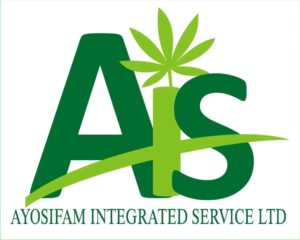The rains are coming, and across Nigeria and similar communities, smallholder farmers are diligently preparing their land for the upcoming planting season. This year, with a focus on the resilient crops of cassava and potato, it’s crucial to consider not only soil health and seed quality but also the responsible management of water. Reducing wastewater during this preparatory phase is vital for conserving this precious resource, protecting the environment, and ultimately ensuring a sustainable and productive harvest.
Here’s how smallholder farmers can minimize wastewater generation as they gear up for planting cassava and potato:
1. Efficient Land Preparation Practices:
a, Minimize Excessive Tilling: While some tilling is necessary, excessive or deep plowing can lead to increased runoff and soil erosion, carrying valuable topsoil and any water used in the process away from the field. Opt for minimal tillage techniques that disturb the soil less.
b, Strategic Weeding: Instead of relying solely on water-intensive methods for weed control, explore alternatives like manual weeding, mulching with organic materials (like dried leaves or crop residues), or using appropriate cover crops. These methods reduce the need for herbicides that might require water for application and subsequent washing of equipment.
c, Contour Farming and Terracing: On sloping land, implement contour farming (plowing and planting along the natural contours of the land) and terracing to slow down water runoff and allow for better absorption into the soil. This reduces the amount of water that becomes surface runoff and potential wastewater.
2. Water-Wise Seed and Planting Material Preparation:
a, Dry Seed Treatment: For cassava stems and potato seed tubers, prioritize dry treatment methods whenever possible. Instead of soaking them in large volumes of water-based solutions, consider using dust-based fungicides or other dry treatments to protect against pests and diseases.
b, Targeted Washing (If Necessary): If washing planting materials is unavoidable (e.g., to remove soil or treat specific issues), use only the necessary amount of water and try to contain the wash water. Consider using a basin or container rather than a running hose.
c, Reusing Wash Water (Carefully): If washing is essential and the water is relatively clean and free of harmful chemicals, explore possibilities for its reuse. For instance, it might be suitable for lightly watering a small nursery plot or cleaning tools away from the main planting area. However, exercise caution and avoid reusing water contaminated with pesticides or fungicides on edible crops.
3. Responsible Tool and Equipment Cleaning:
a, Dry Cleaning First: Before using water, remove as much soil and debris as possible from tools and equipment using brushes, cloths, or even compressed air if available. This significantly reduces the amount of water needed for a final wash.
b, Use Buckets or Basins: Instead of washing tools under a running tap, use buckets or basins filled with the necessary amount of water. This allows for better control and minimizes water wastage.
c, Collect and Reuse Cleaning Water (Where Appropriate): Water used for cleaning tools (if not heavily contaminated with chemicals) can potentially be used for other non-critical tasks like wetting pathways to suppress dust.
e, Clean Away from Water Sources: Ensure that any tool cleaning activities are carried out away from natural water bodies like streams or ponds to prevent contamination.
4. Planning for Efficient Irrigation (Future Consideration):
While not directly related to pre-planting preparation, thinking ahead about irrigation will be crucial once the cassava and potato crops are established. Consider:
a, Water Harvesting Techniques: Explore rainwater harvesting methods like constructing small ponds or using storage tanks to collect rainwater for irrigation, reducing reliance on other water sources and minimizing potential wastewater from excessive watering.
b, Water-Efficient Irrigation Methods: Investigate and adopt water-efficient irrigation techniques like drip irrigation or localized watering, which deliver water directly to the plant roots, minimizing evaporation and runoff.
c, Focusing on Cassava and Potato: Cassava and potato are generally considered relatively drought-tolerant crops, especially once established. This inherent resilience can help reduce the overall water demand throughout their growth cycle. By focusing on these crops, farmers can potentially lessen their reliance on extensive irrigation later in the season, further contributing to water conservation.
Benefits of Reducing Wastewater:
a, Water Conservation: Preserves a vital resource, especially crucial in regions facing water scarcity.
b, Environmental Protection: Prevents pollution of water bodies with soil, fertilizers, and other contaminants.
c, Cost Savings: Reduces the need for excessive water usage, potentially lowering water-related expenses (if applicable).
e, Improved Soil Health: Minimizing runoff helps retain valuable topsoil and nutrients.
f, Sustainable Agriculture: Contributes to more environmentally friendly and resilient farming practices.
As smallholder farmers in Nigeria and beyond prepare for a new planting season focused on cassava and potato, embracing water-wise practices is not just an environmental responsibility but a smart agricultural strategy. implementing these practical steps, they can ensure a more sustainable and prosperous future for their farms and communities. Every drop saved is a step towards a more secure and bountiful harvest.




